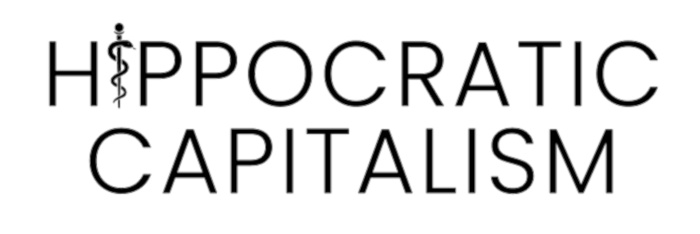Fixing Medicare: An Open Letter to Chris Klomp

Mr. Klomp,
Congratulations (I hope that’s the right word to use here) on the your appointment to lead one of the world’s biggest bureaucracies. When you and I met a few years back, you were CEO of Collective Medical, a company offering innovative solutions to practical problems faced by hospitals and physicians. And we both know that Medicare is desperately in need of innovative solutions.
I definitely don’t envy that trillion-dollar target on your back. Medicare, and by extension the American taxpayer, is regularly cheated by insurance companies, health systems, medical equipment suppliers, and some physicians. But the problem isn’t limited to fraud, waste, and abuse. It’s the mis-structured American healthcare industry that has grown far larger than it needs to be for serving the healthcare needs of its citizens.
I’d like to offer a few suggestions for framing your agenda for the next four years.
- Rethinking accountability. Medicare’s primary accountability is to its beneficiaries (for covering their medical care) and to the American taxpayer (for frugality). Medicare’s main business counterparts, on the other hand, are massive corporations and professional organizations, including health systems, suppliers, and physician groups. Unsurprisingly these organizations pump enormous sums of money into lobbying in order to skew Medicare’s policies and practices toward their own interests and away from the interests of individual citizens and communities. This regulatory capture corrupts and distorts accountability.
- Rethinking markets. As Adam Smith famously explained 250 years ago, free markets are only free when there’s a level, fair, playing field among both suppliers and customers. By that definition, American healthcare is the opposite of a free market. The largest corporations hold most of the cards, and they use their power to enrich themselves at taxpayers’ and patients’ expense. Medicare may be just one component of American healthcare, but it has enormous influence over the structure and rules of the market. In coordination with FTC and DOJ antitrust regulators, Medicare could play a significant role in crafting a truly free marketplace for medical services.
- Rethinking geography. Life in a rural community comes with many tradeoffs, such as longer driving distances, more limited arts and dining, and fewer local career paths for your children. But access to basic healthcare, including obstetrics, emergency services, primary care, and community-based cancer care, shouldn’t be one of those tradeoffs. Unfortunately, both for-profit and non-profit health systems figured out long ago that urban and suburban healthcare brings larger margins, and so they’ve been systematically cutting back on key rural services. At the same time, independent rural hospitals and physician groups struggle to compete in a marketplace dominated by the bigs. Given this market failure, the Medicare program has long played a central role in protecting rural healthcare, but its efforts haven’t been sufficient, and some of them (e.g. the 340b drug program) are a source of cheating by big health systems.
- Rethinking quality. National quality measurement systems, including the CMS Star ratings and the National Quality Forum framework, are well-intentioned and politically popular, but they simply don’t work. By creating the illusion of quality measurement they do more harm than good. Quality can only be properly managed and measured locally, not nationally. There are far too many important variables in medical care to be able to roll everything into a single view. In the meantime, hospitals and physicians use their influence to steer measurement systems to reflect their own interests rather than what patients and communities care most about. For example, easily measured but medically debatable (and revenue-generating!) programs like cancer screening end up contributing more to quality scores than high-impact but harder to measure factors like adequate nurse staffing.
- Rethinking transparency. One way large healthcare companies gain unfair advantage over smaller organizations and patients is through information asymmetries such as opaque pricing. CMS’s price transparency rules have unfortunately been largely ineffective. In a normal market, consumers hold suppliers accountable for price transparency, but CMS’s rules hold hospitals to a bureaucrat standard rather than an ordinary citizen standard, and the rules can be easily gamed. Public transparency regarding prices, reimbursements, business arrangements, etc. are a market foundation and need to be treated as such, rather than allowing corporations to claim this data as trade secrets. Broader data transparency may also help with the risk adjustment problem reported so well by the Wall Street Journal and others, whereby UnitedHealth and other Medicare Advantage providers have cheated taxpayers out of billions through manipulating diagnosis codes.
- Rethinking primary care. American healthcare is inefficient by design. Hospitals, insurers, and many physicians benefit financially from overuse of expensive specialty care and procedures, which is why they have steadily eroded the status and role of primary care. Top-down micromanaging of this overuse, e.g. through prior authorisation, simply can’t keep up. Instead we need to do what almost every other high-income country has done, and put primary care back in center of the healthcare system. This is mainly a market structure problem, not a fee schedule problem. Fix the structure so that efficient care becomes more profitable than inefficient care for payors and provider organizations, and primary care will naturally regain its rightful place in the system.
Mr. Klomp, Medicare has unique influence over the structure of American healthcare, and it also has significant leverage over the major market participants, including health systems, suppliers, and physician groups. The right policy changes could fundamentally alter the market structure. And they could lead to Medicare, and the rest of the American healthcare system, becoming accountable to patients and communities rather than to massive corporations and interest groups.
Sincerely,
Brian Jackson, MD, MS
